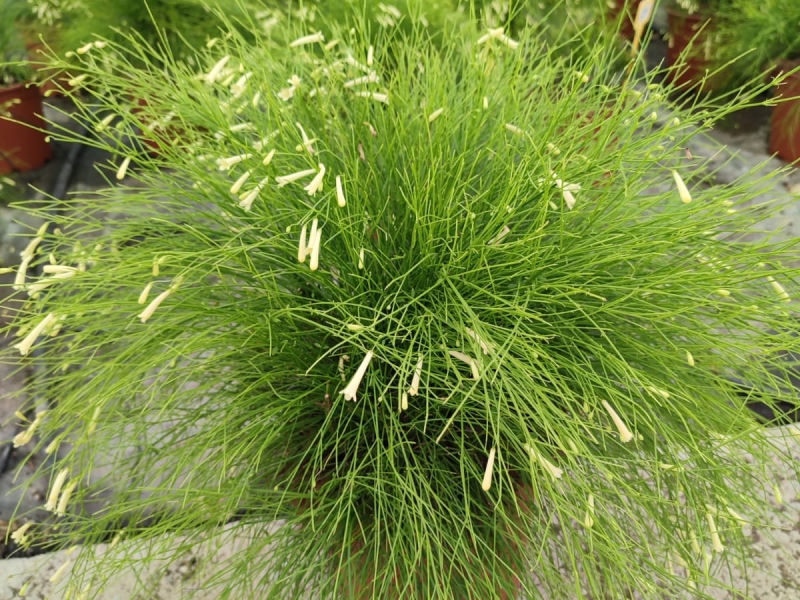

Pretty small evergreen shrub, very ornamental and with a typical prostrate bearing. Native to Mexico, it can quickly grow and lift from the ground up to 1m height and develop in the same way or a little more in width. The long flexible branches that branch off from the base are thin, green, fleshy and extremely branched; at first erect and then with an arched and prostrate posture, they are covered with small lanceolate leaves of a bright green color. Between spring and autumn, it is covered with a myriad of small tubular white-cream flowers that sprout above all at the apex of the most vigorous branches.
The staff of Vivai Capitanio has his own catalogue with all the plants in the store and that grows in our greenhouse. Use this button to download the latest version.
PAper catalogue is available only for professionals. Fill the form to receive it by post: